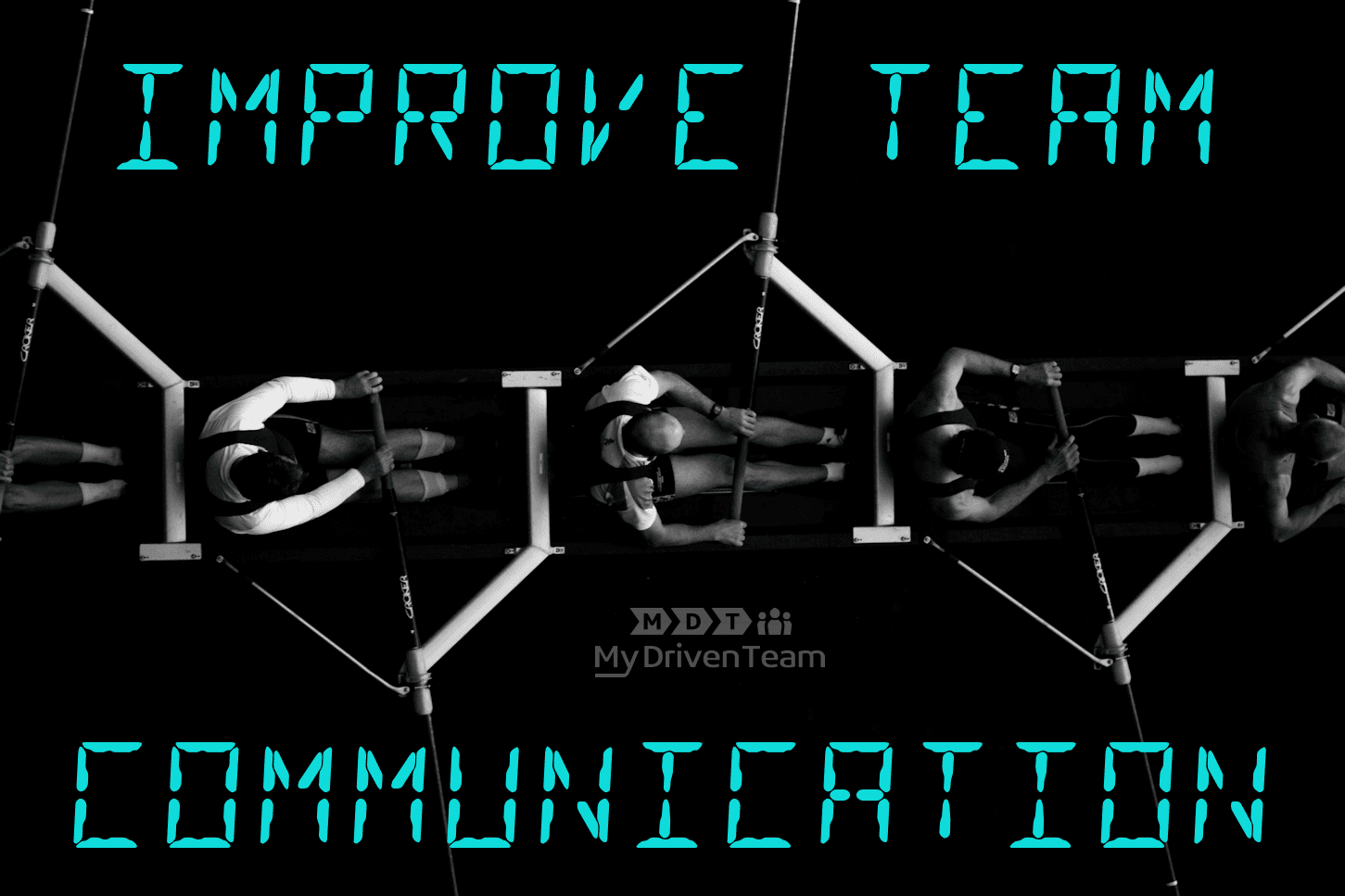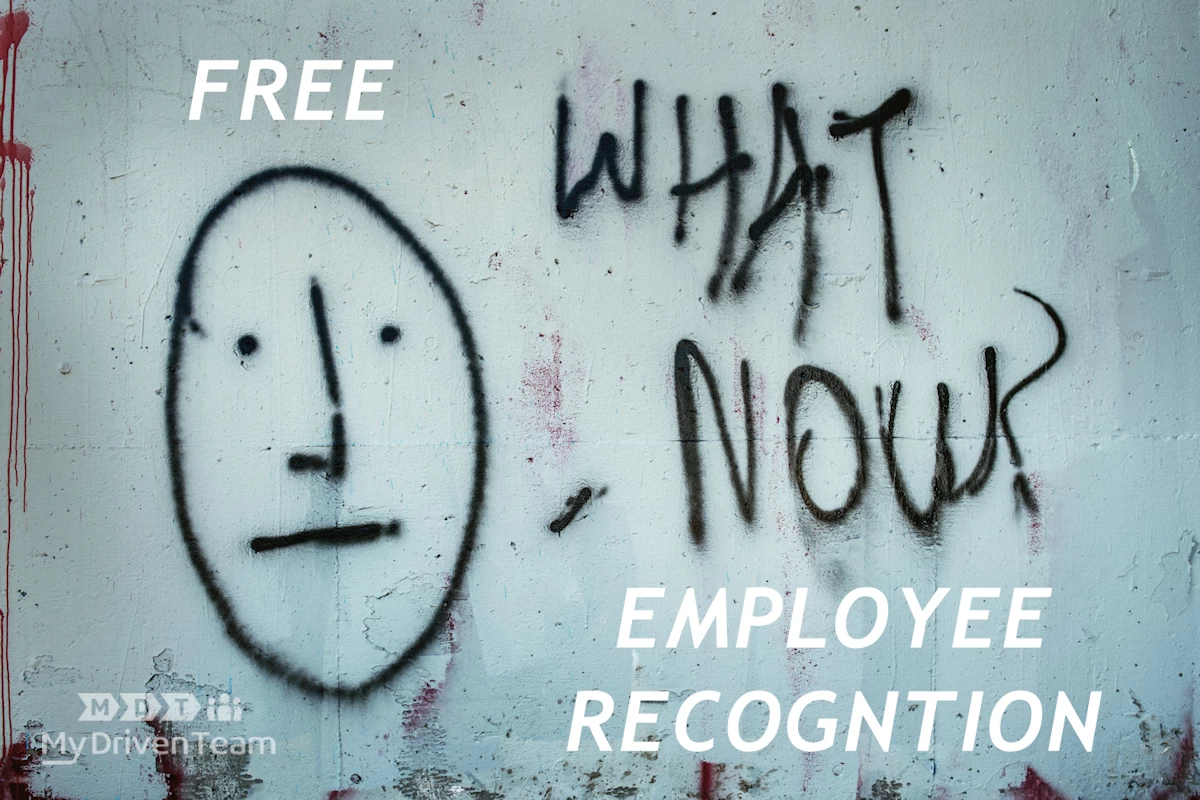
Team communication is one of those topics that never goes away. Even the best teams will stumble when it comes to communication and be forced to adjust. Yet, it is one of those basic building blocks that can be an impediment or catalyst to everything for a team. The even tougher part is that when it’s working well, it almost feels like magic. It just works…little effort is needed and the team hums. The good news is you don’t have to accept it as magic! Below, I’ll outline 10 Practical Tips that can help a team get or stay on track when it comes to team communication.
Reduce Conflict
I’ve written about this before…good quality personality profiles simply work wonders in the right environment! Different personality styles are tightly connected to communication styles. Not surprisingly, differing communication styles often lead to conflict on a team. Personality profiles give structure to one of the most complex topics on earth…the human personality and how it communicates.
One thing to note on this tool is around Leadership. If Leadership accepts and embraces the concept, personality profiles have a multiplying affect. Meaning, that while it’s good for you to analyze yourself alone and in a bubble it’s even more powerful with a team being led by strong leader. If a team leader takes this process seriously and invests in their team, the rewards are great! When you have a team that understands their own communication styles, understands that their individual style isn’t necessarily the best, and gets that feedback directly, you get something special! I’ve seen this work many times and simply love witnessing a team have that light bulb moment, that says…”I never realized this about myself”. It’s enough to make a Change Agent cry!
That said, if Leadership minimizes the impact / importance of this type of work, it’s going to be tough. Sometimes, I hear people say…”I don’t have time for that”. Yet, those same people will be the first you see at the water cooler complaining about someone; so just keep that in mind.
While these are amazing tools to introduce (or even re-introduce) to a group, it’s also a great tool for personal growth. Even if you’ve done it before, it’s a great habit to revisit yours regularly to at least maintain awareness of your own style. Personally, I’ve found great value from a DISC Profile and equal but different value in the Meyers Briggs Type Indicator. Both helped me learn different things about myself and how people perceive what I’m saying. This can be eye opening and game changing for anyone that hopes to work well in a team setting!
Practical Tip #1:
See if your group or team is interested in learning more about communication styles. Just ask them if they would be willing to invest 8+/- minutes watching the following video and grabbing lunch to discuss: https://www.youtube.com/watch?v=Al3L6cnCmMU
Practical Tip #2:
If tip #1 goes well, push it further by asking them if they would be willing to engage in an actual profile and share some results. There are many free and low cost profiles. DISC seems to be the easiest to get your hands on at low or no cost, however MBTI is a great tool if you are willing to pay. The big game changer hear comes down to two things:
- Awareness of your tendencies
- Character to do something about that awareness
Influencing Influencers
Even after years of working with teams, I sometimes forget how important this topic is. Many times within a functioning group, there are “influencers”. These are the de facto leaders in behavior (not necessarily rank). People follow willingly (although sometimes the herd pushes them). Either way this person or persons have the team’s ear. When they talk, the team listens and acts.
What I’ve witnessed is that words can be spoken by one person and have little to no impact. However, with the right “influencer” behind those words, mountains are moved. I cannot understate this! You can spend a lot of energy trying to convince a group to move in a certain direction, just to watch that energy fizzle. However, convince that one influencer and you get a parting of the red sea!
So, step one is identifying this person or persons. While it can be fairly easy to see who these people are, sometimes it’s not. If this person is outside your normal circle, you might have to do some home work. Talking to people that are in this circle, you can usually figure it out by asking some simple questions.
- Who is the most experienced person here?
- Who would you go to if you were afraid of making a mistake?
- Who is the most trustworthy person on your team?
Practical Tip #3:
If you are trying to influence an influencer and the topic is difficult, it’s almost always best to talk to them one-on-one. This can be tricky. You will need to pick the right setting. Pick one that puts them at ease (which will often be one that puts you in tension). You will also want to pick a time that reduces their stress level. Lastly, you will not want to come directly at them asking for something. Ask for their opinion. Ask them how they would achieve the outcome you are looking for. And the hardest but most important part…be willing to adjust your strategy.
One-on-one Is Lot’s of Fun
You would think that improving “team communication” means you have to be in a team setting. However, I found that the opposite is often true. The problem is that in a team setting, many people tend to tense up a bit. This is especially true if you are discussing a topic that makes them look bad (even if it’s only their perception). I’ve found that one-on-one discussions lend themselves to more candid feedback, if handled correctly.
Practical Tip #4:
The criticism sandwich. Honestly, I don’t know where I even learned this, but I know it works. The criticism sandwich is simply “sandwiching” a criticism with two compliments.
Here’s an example: “Hey, I love the work you are doing on the new line of widgets; your creativity has been invaluable (pause for acceptance). That being said, I would really appreciate it if you could be a little more patient with Laura on her project because I believe it’s causing some frustration (pause, listen for feedback, and agree on action steps). Before you leave, I also want to thank you for the late hours on Thursday, that made a big difference to the team and our ultimate goals.”
Practical Tip #5:
Set up a specific time and place to meet with your direct reports (or with your direct Supervisor if that’s the case). My personal preference is weekly if time permits. Be clear on what you want to discuss and leave a little time open for candid discussion. This kind of regular cadence with clear expectations reduces tension over-time. Of course try not to make these meetings confrontational or it will lead to the opposite.
Invest In People
This sounds like such a cliché! Invest in people and change your culture for maximum engagement. Yuk! Let’s be real here…everyone wants to feel like they are important (it’s universal). My sensei used to say:
Nobody comes to work to fail.
Luc Morrissette
So, instead of cliché, I’m suggesting real action. Setting aside time to discuss a particular topic is one thing, however setting aside time to come up with and follow a development plan is an entirely different level. This is how you make sure people know that you are willing to put your money where your mouth is.
Those of you reading this that don’t directly supervise anyone will likely say, “but my boss doesn’t care”. Fine…who cares! Do you have your own development plan? Have you shared it with them? Have you considered how that development plan will help the team? If you won’t take the time to do that, then how can you expect your boss to do it for you?
Practical Tip #6:
Once you have a development plan, outsource! Oftentimes both managers and employees over-estimate the time it will take to move the needle on a particular topic. If you pick a topic that has value to both parties, finding a resource to support can be relatively inexpensive (digital products, videos, books, personal coaches). Any or all of these resources can make a huge impact and can be very reasonable. Just take a step, then another, and then another (just don’t forget to celebrate)!
Write It Down
There is something about writing things down. Not only does it stream into your eyes instead of your ears, it is digested in a way that gives time to the reader to stop and ask, “why?”. Nowadays, it also gives time to the reader to stop and google something if they don’t understand.
While these are amazing advantages, it also falls into the category of boring compared to much of the content we create. Of course, I’m biased. I read. However, I also love video. I love to create videos, and I love to consume them. A well done video is second to none in getting your point across. The funny thing I learned when creating videos is that the ones I’ve done best with were the ones that were planned. Why? Because I had to write down a plan. Writing forces you to identify your main point, intro, structure, and conclusion. Because of this, I realized that videos and writing have the same things in common…logic.
Logic, or the lack of logic, is the typical reason people tend to conflict. To be more specific, the imbalance of emotion to logic (or excess emotion) is usually the reason people disagree. If you lay out the facts, more often than not people will agree or can at least compromise.
So, back to my main point. Take the time to write down what you are trying to communicate to a team before you say it, and you will likely have a more clear message. Of course, writing it, saying it, and sharing what you wrote can add even more to the conversation.
Practical Tip #7
Sometimes when we write things down and polish it too much, teams can feel like they have no say. This is the power of the white board. Writing things down in front of a group, allowing them to carve it up, chop it up, or even start over can really help a team digest a specific topic. Key ingredients = time, a white board, and bravery.
Check It Off
This is about as simple as they come…make a checklist. Checklists are a great way to get practical and keep things simple. My sensei always said:
“The best type of communication, is no communication at all.”
Luc Morrissette
Having a checklist for certain critical tasks is a great way to reduce unnecessary communication, which then leaves time for the good stuff. Not only does it force the giver of the tasks to think through what they want, but it also serves as a reminder for the doer of said tasks. Of course, you can’t forget that it can serve as a great feedback loop to say, “it got done.”
Simply make a checklist that is short, simple, and easy to use. Ask yourself, how, when, why, where. Once you have that, slap it into a word doc or google sheet and print.
Practical Tip #8
Accountability cadence. Checklists without accountability mean about as snow in July. Within time, a checklist’s impact, without leadership accountability, will fade. Create a plan to follow up and you will give weight to checklists…this will pay dividends long-term.
Talk Amongst Friends
The way we communicate today is streaming and non-stop (it’s a feed). So, why would we communicate with a team any differently. Waiting days to talk to your teammates is like waiting days to water a plant in the summer (bad idea). The right thing to do is to stay in constant communication. Not, necessarily with heavy structure or process, but in a more familiar or even social way.
Group chats are great for this! Whether you use a text messaging app, a specialized app, or your work chat service, this is a great way to stay connected and allow for unfiltered feedback.
Practical Tip #9
Open a group chat with your team contacts. Say Hello, and ask a simple question that you don’t have the answer to (related to your team / topic). Don’t argue with their answers, just ask clarifying questions and let them know you appreciate their answers. Ask them to return the favor when they have the need. Follow up in a couple of days with another question if needed. Be patient.
Recalculating
For those that are used to using google maps, you know what it means when I say “recalculating”. This is the same concept when it comes to communication. You will run into problems on this topic, whether you lead a team or are just a member of one. It’s not a matter of if, it’s a matter of when. The real opportunity is how you deal with that problem. Do you put your head in the sand and hope it goes away? Or do you attack it head on and tell people to deal with it? Neither of those situations are great ways of handling these kinds of issues. You are better off talking to the team, using rational thought, and mutual respect to clear the air.
Practical Tip #10
Set aside time with your team to discuss communication channels and opportunities. One way of doing this is just to map our your meetings under the guise of making them more efficient. By doing this, you can get their feedback on what is working and what is not. If you aren’t the team leader, talk to the team leader about doing this. They will likely appreciate the idea of streamlining and removing waste. Even if it’s not a group session, just writing down your list of meetings, the purpose and attendees for each, you will likely uncover opportunities.
Conclusion
Team communication is not magic, but it does take skill and effort. Like anything else you will take steps forward and steps backwards, but the key is learning what works and what doesn’t with your particular team. Just remember to compromise on style and solutions, but not on your principles (and have fun doing it).



